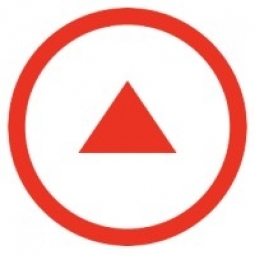公司规模
SME
地区
- America
国家
- United States
产品
- Fulcrum
技术栈
- Android
- GIS
- GPS
实施规模
- Enterprise-wide Deployment
影响指标
- Productivity Improvements
- Cost Savings
技术
- 应用基础设施与中间件 - 数据交换与集成
适用行业
- 城市与自治市
适用功能
- 物流运输
- 质量保证
用例
- 实时定位系统 (RTLS)
- 远程资产管理
服务
- 数据科学服务
- 系统集成
关于客户
Village Earth is a 501(c)(3) not-for-profit organization based at Colorado State University in Fort Collins, Colorado. They have been providing an array of technical support and training to American Indian Tribes for over thirteen years. Village Earth is currently serving as the lead housing unit mapping and survey contractor for the Dakota Housing Needs Assessment (DHNA), a project to challenge existing Federal Census data on five reservations in South and North Dakota. This project also seeks to develop a model data collection, compilation, and submission process that will be authorized and funded by Congress and implemented by tribes and tribal housing entities nationwide.
挑战
Village Earth, a not-for-profit organization, was tasked with conducting a housing needs assessment for five American Indian Tribes in South and North Dakota. The aim was to challenge existing Federal Census data, which often undercounts rural populations due to difficulties in data collection. Many Native American Reservations lack a complete inventory of households, consistent addressing systems, or even marked roads. Additionally, it is common for Tribal members to locate a house or mobile home on their own land without registering it with their Tribe’s housing authority, making it virtually impossible to find using existing records. The technical approach to data collection also presented challenges in terms of efficiency and team management. Issues included quality control monitoring, distribution of work, and data digitization.
解决方案
Village Earth decided to use Fulcrum, a digital data collection tool running on Android devices, to conduct the household mapping and needs assessment. Fulcrum allowed for the preload of the survey with the locations of households mapped using aerial photos, the ability for field crews to track their location and the location of the pre-loaded households using offline basemaps, and the creation of complex forms to perform data collection offline. Additional features of Fulcrum that were utilized included color-coded map markers, record assignment, parent-child relationships for individual surveys, layers to basemaps, and a web-based management interface. These features allowed for more efficient management of the 50+ member field crew, distributed over two states and five Native American Reservations.
运营影响
数量效益

Case Study missing?
Start adding your own!
Register with your work email and create a new case study profile for your business.
相关案例.

Case Study
Turning A Stadium Into A Smart Building
Honeywell created what it called the “intelligent system” for the National Stadium in Beijing, China, turning the venue for the opening and closing events at the 2008 Summer Olympics into a “smart building.” Designed by highly controversial artist Ai Weiwei, the “Bird’s Nest” remains one of the most impressive feats of stadium architecture in the world. The 250,000 square meter structure housed more than 100,000 athletes and spectators at a time. To accommodate such capacity, China turned to Honeywell’s EBI Integrated Building Management System to create an integrated “intelligent system” for improved building security, safety and energy efficiency.
.png)
Case Study
Smart Street Light Network (Copenhagen)
Key stakeholders are taking a comprehensive approach to rethinking smart city innovation. City leaders have collaborated through partnerships involving government, research institutions and solution providers. The Copenhagen Solutions Lab is one of the leading organizations at the forefront of this movement. By bringing together manufacturers with municipal buyers, the Copenhagen Solutions Lab has catalyzed the development and deployment of next-generation smart city innovations. Copenhagen is leveraging this unique approach to accelerate the implementation of smart city solutions. One of the primary focus areas is LED street lighting.

Case Study
Buoy Status Monitoring with LoRa
The Netherlands are well-known for their inland waterways, canals, sluices and of course port activities. The Dutch Ministry of Infrastructure indicates that there are thousands of buoys and fixed items in and near water environments that would profit from IoT monitoring. One of the problems with buoys for example, is that they get hit by ships and the anchor cable breaks. Without connectivity, it takes quite some time to find out that something has happened with that buoy. Not to mention the costs of renting a boat to go to the buoy to fix it. Another important issue, is that there is no real-time monitoring of the buoys at this moment. Only by physically visiting the object on the water, one gains insight in its status.

Case Study
China Mobile Smart Parking
Smart Parking, powered by NB-IoT technology, is making it easier for drivers to find free parking spots. Cities can better manage their parking assets and maximize the revenue available to them as a result. Drivers searching for parking create congestion and pollution by circling and hunting for available parking. Smart Parking services are able to significantly ease these problems by guiding a driver directly to a parking space.

Case Study
Barcelona Case Study
Barcelona’s heavy traffic and its associated high levels of pollution were the primary factors that motivated some companies and universities to work on strategies for improving traffic in the city centre. Bitcarrier is one of the technologies involved in the In4Mo Project, whose main objective is to develop the applications that form the core of smart mobility, one of the fundamental pillars of the smart city concept.




